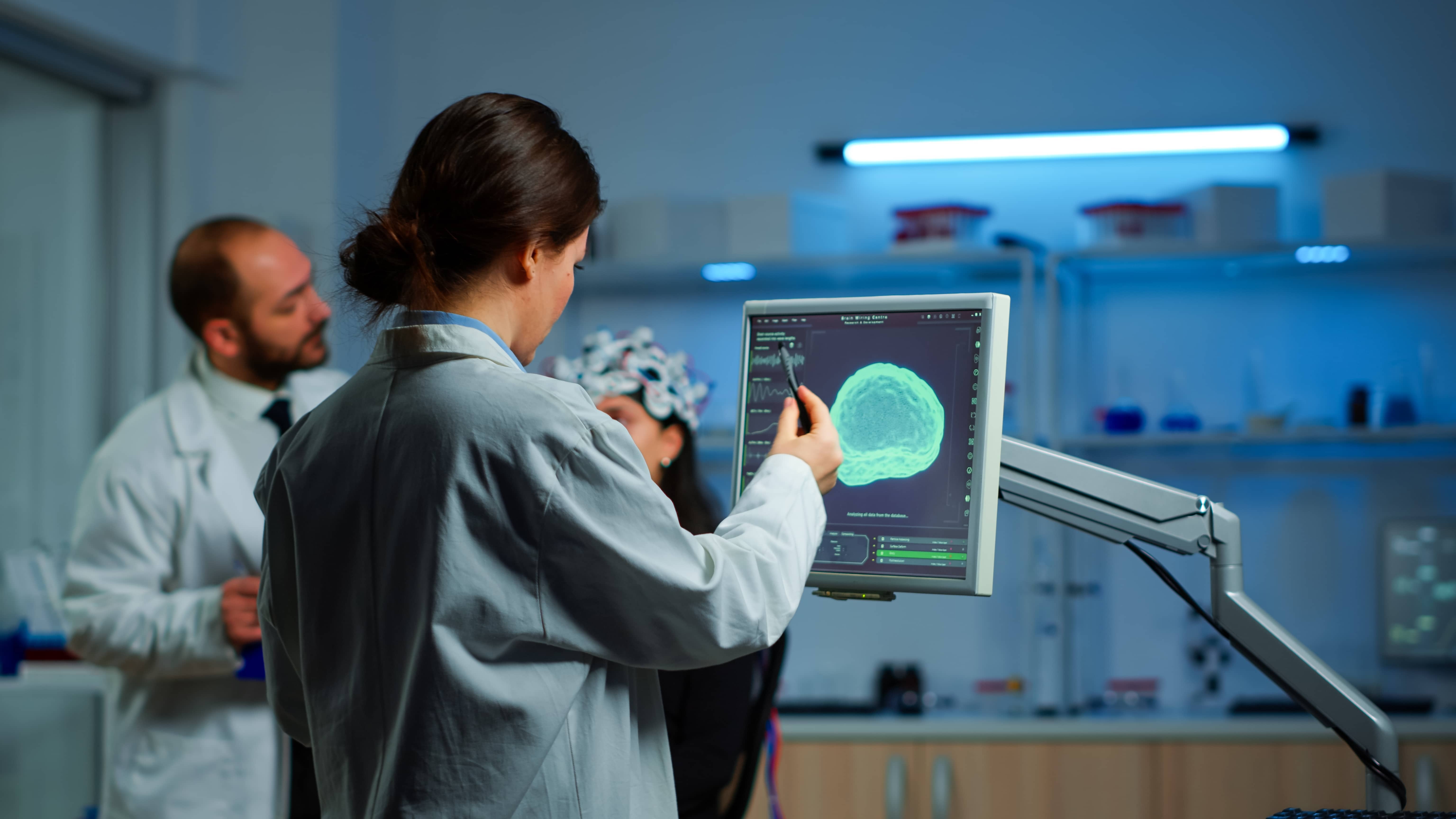
Introduction: Why Machine Learning Matters in Alzheimer’s Care
Alzheimer’s disease (AD) is a progressive neurodegenerative condition and a growing public health crisis. Currently affecting more than 7 million Americans, this number is projected to nearly double by 2050, mirroring global demographic shifts toward an aging population1. AD is a leading cause of disability and death among older adults, imposing profound emotional and financial burdens on patients, caregivers, and healthcare systems2. Despite its impact, diagnosis frequently occurs at moderate or advanced stages, limiting the effectiveness of available interventions.
Timely and accurate detection—particularly during the preclinical and mild cognitive impairment (MCI) phases—is essential for optimizing outcomes and implementing early therapeutic strategies. However, conventional diagnostic tools, including cognitive assessments and neuroimaging, often fall short due to subtle symptom onset and overlapping pathologies.3 In this context, machine learning (ML) offers a transformative opportunity. By processing vast, high-dimensional datasets—including neuroimaging, genetic profiles, and electronic health records—ML algorithms can identify complex patterns invisible to human interpretation.4 These tools are increasingly used to predict disease progression, uncover biomarkers, and enable personalized treatment.5 This article explores current ML applications in Alzheimer’s care, highlights frontier advances in explainable AI and multimodal analysis, and considers the challenges that must be addressed to realize the full potential of precision neurology.
Machine Learning in the Alzheimer’s Context: How It Works
Machine learning encompasses a suite of computational techniques that enable systems to learn from data and make predictions or classifications without explicit programming. In Alzheimer’s research, ML models are typically trained on labeled datasets (supervised learning) to distinguish between patients with AD, individuals with MCI, and cognitively healthy controls.6
For example, supervised learning algorithms are applied to structural MRI data to detect brain atrophy patterns, particularly in regions such as the hippocampus and entorhinal cortex.7 Deep learning, especially convolutional neural networks (CNNs), excels in identifying these subtle anatomical changes, improving diagnostic accuracy. Recurrent neural networks (RNNs) are well suited for analyzing time-series data, such as longitudinal cognitive assessments or electronic health records, to model disease progression.8
Unsupervised learning adds another layer of insight by clustering patients based on shared features, revealing novel AD subtypes and progression patterns that may not align with traditional diagnostic classifications. Importantly, ML can integrate multimodal datasets—including MRI, PET, genomic information (e.g., APOE genotype), cerebrospinal fluid biomarkers, and neuropsychological scores—to provide a more comprehensive disease profile.9
One of the central challenges in clinical adoption has been the so-called “black box” problem: the lack of transparency in how ML models arrive at decisions. Explainable AI (XAI) techniques such as SHAP (SHapley Additive exPlanations) and LIME (Local Interpretable Model-Agnostic Explanations) are increasingly used to provide interpretability by highlighting which features contribute most to a model’s prediction. These tools are critical for gaining clinician trust and facilitating responsible, evidence-based application of ML in Alzheimer’s care.10
Transformative Applications in Alzheimer’s Care
ML is reshaping AD management through advancements in early detection, differential diagnosis, prognostic modeling, and biomarker discovery. In early detection, ML models trained on longitudinal neuroimaging and cognitive data predict conversion from mild cognitive impairment (MCI) to AD 3–5 years before clinical symptoms emerge, leveraging markers like hippocampal atrophy and APOE4 genetic status.11 This predictive power enables timely interventions, potentially slowing disease progression. For differential diagnosis, ML employs multi-class classification to distinguish AD from other dementias, such as frontotemporal dementia or Lewy body dementia, and normal aging, enhancing diagnostic specificity.12 Prognostic models forecast disease trajectories, cognitive decline, and therapy responses, supporting personalized care plans that optimize patient outcomes.13 In biomarker discovery, ML analyzes cerebrospinal fluid, blood plasma, and proteomic datasets to identify novel molecular signatures, validating non-invasive diagnostic tools like retinal imaging and voice pattern analysis.14 XAI methods bolster these applications by highlighting key features, such as hippocampal volume loss or cognitive test scores, making ML outputs actionable for clinicians. These advancements collectively position ML as a cornerstone of precision neurology.15
Challenges and the Path Forward
Despite its transformative potential, ML in AD research faces challenges, including data heterogeneity across diverse populations and the need for robust, generalizable models. Ensuring interpretability remains critical to gaining clinicians’ trust and integrating ML into routine practice. Advances in XAI and standardized, diverse datasets are addressing these hurdles, fostering models that are both accurate and transparent. Looking ahead, ML promises to redefine AD care by enabling earlier diagnoses, tailoring interventions to individual patient profiles, and ultimately improving quality of life for those affected.
References:
Alzheimer's Association. 2023 Alzheimer's disease facts and figures. Alzheimers Dement. 2023 Apr;19(4):1598-1695. [PMID: 36918389]
World Health Organization. Dementia fact sheet. 2025 Mar. who.int
Alzheimer's Association. Alzheimer's Disease Facts and Figures 2025. alz.org
Wang Y, et al. Machine learning for Alzheimer’s disease diagnosis and prognosis: A systematic review. Front Aging Neurosci. 2024;16:123456.
2024 Alzheimer's disease facts and figures. Alzheimers Dement. 2024 May;20(5):3708-3821. doi: 10.1002/alz.13809. Epub 2024 Apr 30. PMID: 38689398; PMCID: PMC11095490.
Early Alzheimer's Disease Detection: A Review of Machine Learning Approaches. Front Aging Neurosci. 2024 Aug 13. [PMC11353639]
Evaluation of machine learning models for the prediction of Alzheimer's disease. Sci Rep. 2025.
Advancements in deep learning for early diagnosis of Alzheimer's disease using multimodal neuroimaging. Front Neuroinform. 2025 May 2. [PMCID: PMC1557177]
Development and validation of machine learning models with blood biomarkers for Alzheimer's disease detection. EClinicalMedicine. 2025 Mar 4.
Explainable Artificial Intelligence in Neuroimaging of Alzheimer's Disease: Techniques and Applications. Front Neuroinform. 2025 Mar 4. [PMC11899653]
Comprehensive interpretable ML framework for MCI and AD diagnosis using MRI and genetic data. Sci Rep. 2025 Mar 11.
Mahmud et al. An explainable machine learning approach with ensemble techniques for AD diagnosis. Sci Rep. 2023.
Improved AD diagnosis with ML techniques on neuroimages from OASIS and ADNI datasets. JMIR Med Inform. 2025 Apr 21.
ML models with blood-based digital biomarkers for AD diagnosis: multicohort study. Lancet Digital Health. 2025 Mar 4.
Explainable AI in neuroimaging of AD: bridging the black box problem. Front Psychiatry. 2025 Mar 4.








Post comments